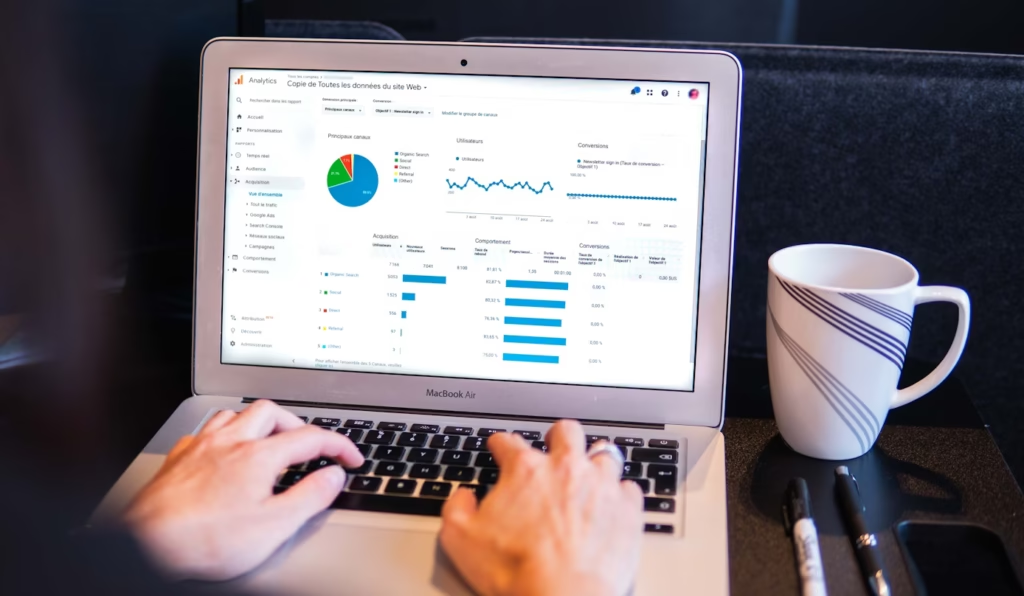Introduction
Achieving decisive success with Google Ads requires a strategic approach. Navigating the various campaign types and ad formats can be daunting, but understanding each option’s unique strengths is crucial. This guide provides expert tips to help you choose the right campaigns, optimize for maximum impact, and ultimately drive significant results for your business. Whether your goal is to increase website traffic, generate leads, boost sales, or enhance brand awareness, mastering Google Ads is within your reach.
Understanding Different Types of Google Ads Campaigns & Ad Formats
Google Ads offers a diverse range of campaigns and ad formats, each tailored to specific objectives and audience behaviors. Let’s delve into the key options:
1. Search Campaigns
Purpose: Reach customers actively searching for specific keywords related to your products or services.
Ad Formats: Responsive search ads that appear in Google search results page (SERPs)
Expert Tip: Utilize long-tail keywords and negative keywords to refine targeting and reduce wasted ad spend. Implement ad extensions (sitelinks, callouts, structured snippets, Image etc) to enhance ad visibility and provide more information.
2. Display Campaigns
Purpose: Build brand awareness and retarget users across a vast network of websites, apps, and Gmail.
Ad Formats: Banner ads, responsive display ads, image ads, and native ads.
Expert Tip: Leverage audience targeting (affinity, in-market, demographic) and contextual targeting to reach the right users. Use visually appealing creatives and A/B test different ad variations to optimize performance.
3. Video Campaigns
Purpose: Engage audiences on YouTube and Google’s video partners with compelling video content.
Ad Formats: Skippable in-stream ads, non-skippable in-stream ads, video discovery ads, bumper ads, and out-stream ads.
Expert Tip: Create high-quality video content that aligns with your target audience’s interests. Use custom thumbnail images and compelling call-to-actions. Track metrics like view-through rate and audience retention.
4. Shopping Campaigns
Purpose: Showcase product listings directly in Google search results, driving sales for e-commerce businesses.
Ad Formats: Product Shopping Ads that display product images, prices, and store names.
Expert Tip: Optimize your product feed in Google Merchant Center with accurate titles, descriptions, and high-quality images. Utilize product ratings and reviews to build trust. Implement campaign priority settings for advanced management.
5. App Campaigns
Purpose: Promote your mobile app across Google’s properties, including Search, Play, YouTube, and the Display Network.
Ad Formats: Ads are automatically generated based on your app’s information and creative assets.
Expert Tip: Focus on creating compelling app store listings and providing high-quality in-app experiences. Track metrics like app installs, in-app actions, and user retention.
6. Performance Max Campaigns
Purpose: Drive performance across all of Google’s channels with a single campaign, powered by Google’s AI.
Ad Formats: Automatically generated ads that adapt to different channels and placements.
Expert Tip: Provide high-quality creative assets (text, images, videos) and audience signals to guide Google’s AI. Monitor asset performance and provide regular updates.
7. Local Campaigns
Purpose: Drive foot traffic to your physical stores and increase local sales.
Ad Formats: Ads that appear on Search, Maps, YouTube, and the Display Network, highlighting your business location and information.
Expert Tip: Optimize your Google My Business profile with accurate information, photos, and reviews. Use location extensions and call extensions in your ads.
How to Align Campaign Types with Business Goals
Setting Clear Objectives
Define specific, measurable, achievable, relevant, and time-bound (SMART) goals. For example:
Increase website traffic by 20% in the next quarter.
Generate 100 qualified leads per month.
Achieve a 5x return on ad spend (ROAS).
Matching Campaign Types to Objectives
Traffic: Search, Display
Leads: Search, Display, Video
Sales: Shopping, Performance Max
Brand Awareness: Display, Video
App Installs: App Campaigns
Local Store Visits: Local Campaigns
Key Performance Indicators (KPIs) to Track
Click-Through Rate (CTR)
Conversion Rate
Cost-Per-Click (CPC)
Cost Per Acquisition (CPA)
Return on Ad Spend (ROAS)
Impressions
View Count
Engagement Rate
Budgeting for Your Campaigns
Allocating Budget Based on Campaign Type
Prioritize campaigns that align with your core business objectives. Allocate more budget to high-performing campaigns and those with the highest potential ROI.
Monitoring and Adjusting Budget
Set budget alerts.
Regularly analyze campaign performance.
Reallocate budget based on results.
Advanced Optimization Techniques
A/B Testing: Test different ad creatives, landing pages, and targeting options.
Audience Targeting: Refine your audience targeting based on demographics, interests, and behaviors.
Remarketing/Retargeting: Re-engage users who have previously interacted with your website or ads.
Conversion Tracking: Implement accurate conversion tracking to measure campaign effectiveness.
Automated Bidding: Utilize automated bidding strategies to optimize for conversions or value.
Conclusion
Decisive Google Ads success hinges on understanding and strategically implementing the various campaign and ad types. By setting clear objectives, aligning campaigns with business goals, meticulously tracking KPIs, and continuously optimizing, you can achieve significant results.
Ready to optimize your Google Ads campaigns? Let GC Paid Media, a Google Ads specialist, assist you in achieving decisive success. Contact us today to start maximizing your campaign performance.





